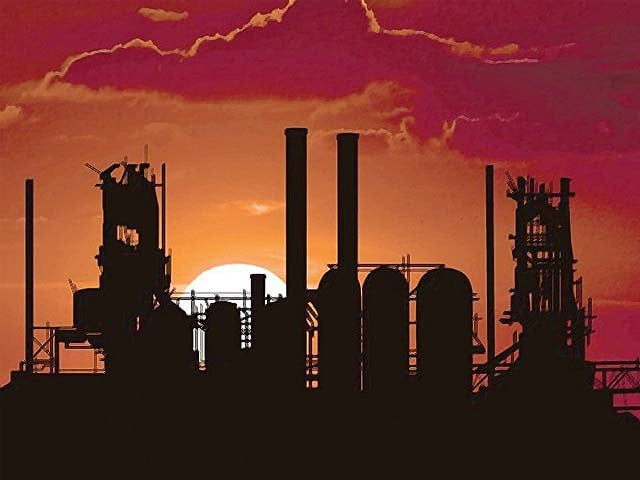Industrial performance is pivotal to ensure sustainable economic growth in the long-run. An engine of any economy, the industry supplies outputs not only to the local but also to foreign markets, which aids in stockpiling reserves to finance the imports of capital goods. Unfortunately, Pakistan has remained an industrially backward country since its creation. One of the largest contributors of jute to the world, Pakistan did not possess a single jute mill. Even today, the sector is heavily textile-reliant, with other key industries being engineering, agro-based, and chemical.
Despite employing roughly one-fifth of the labour-force, Pakistan’s manufacturing sector has displayed an appalling show over the years. Perennial reluctance to adopt a state of the art technology and consequent abysmal levels of productivity has been the core issue of our industries. Contrary to countries like India and China, Pakistan has experienced a series of boom-bust cycles due to a lack of industrial output diversity.
Pakistan’s governments have paid alarmingly low heed to address the industrial woes. Rarely did they develop viable strategies to incentivise investments in the research and development (R&D), which is why we witness a lack of concentration on the value-added items. This has adversely impacted the nature and quantum of our exports in the wake of sparse exposure to international markets. As a result, the exporters only managed an uninspiring competitive position compared to India, Bangladesh, and Vietnam.
Besides, there is an absence of impetus to invest in the industrial sector. Avenues like real-estate provide lucrative returns comparatively without demanding an exhaustive effort. This has transpired a shift from the industry to real-estate – particularly in plots – in the last decade or two. The most prominent case is that of Karachi, which has an overtly inflated real-estate due to the colossal investment of black money. The land is a haven to park ill-gotten wealth, considering the quality of laws and law enforcement prevailing in the country.
The present government inherited a yawning current account deficit (CAD) along with a deplorable foreign exchange position. This called for unpopular measures to shrink the CAD which the economic team managed by downsizing the imports substantially. However, this facile route is just a temporary fix. Pakistan cannot afford to restrict the imports of machinery and raw materials for an indefinite period, so it must go for a long haul. There has to be a concentrated effort to bolster the limping industrial sector.
A vibrant industry will improve our exports and contribute towards economic growth, which will have a positive trickle-down effect on human development. The government must ease the financing requirements if it wishes to encourage the setting up of an industrial plant. It can promote a research culture with sufficient funds to the relevant entities so that the industry savours the perks of innovation. This will ameliorate the quality and quantity of the goods we produce and make our exports compatible with others.
The incumbents need to prioritise the real economy over real estate. The construction package may boost economic activities, but it does not proffer a long-term solution to the deep-rooted economic imbalances. The renegotiations with the Independent Power Producers (IPPs) have to be accelerated. It should yield a downward revision in energy prices, which the industry badly needs. Pakistan also needs to come up with a robust solution to address the burgeoning circular debt. This has to be supplemented with propitious economic policies like a market-based exchange rate conducive to growth.
The crux of the matter is that a lack of innovation, modest production capacity, and exorbitant energy prices place a conundrum in front of the authorities about how to buttress the stumbling industrial sector. Now is the time to solve the perpetual structural issues to improve the macroeconomic scenario. This will assist in corroborating financial stability and economic prosperity in Pakistan.



COMMENTS
Comments are moderated and generally will be posted if they are on-topic and not abusive.
For more information, please see our Comments FAQ